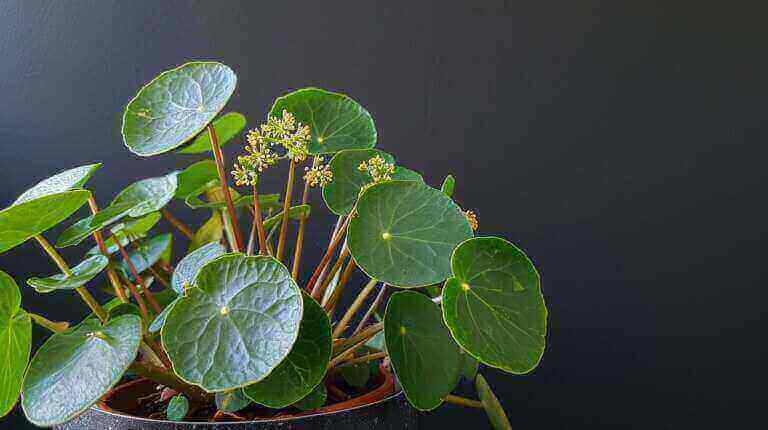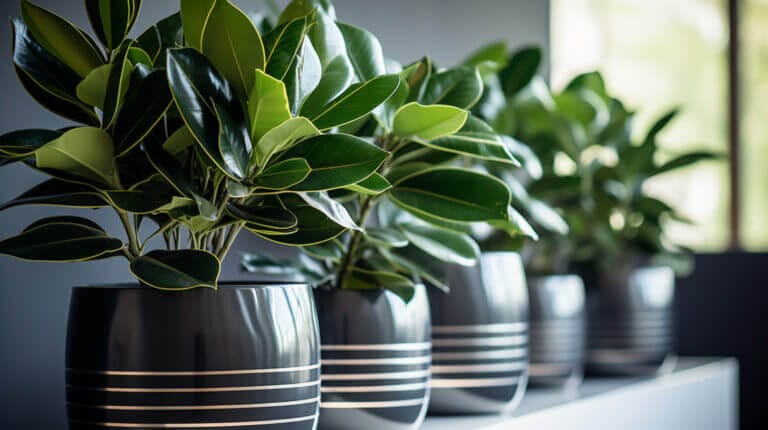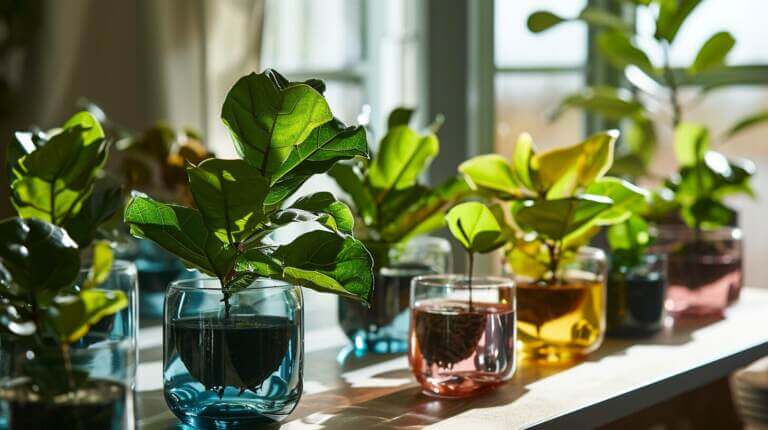Christmas Cactus Light Requirements for Growing Healthy Houseplants
When it comes to caring for your Christmas cactus, providing the ideal light conditions is essential for its health and growth. This beautiful houseplant, also known as Schlumbergera, hails from Brazil and has specific preferences when it comes to lighting.
Key Takeaways:
- Christmas cacti prefer bright, indirect light or filtered light.
- Avoid placing the plant in south-facing windows, as they provide too much direct sunlight.
- During the winter holiday season, provide at least 8 hours of continuous darkness to encourage bud set and blooming.
- Consider placing the plant in a shaded area or cover it with a blackout curtain for the required darkness.
- An ideal location for a Christmas cactus is a north-facing window where it can receive sunlight during the day and complete darkness at night.
Christmas Cactus Watering and Care Tips
Proper care and watering are essential for maintaining the health and vitality of your Christmas cactus. Here are some important tips to ensure your plant thrives:
- Watering: Christmas cacti prefer to be kept slightly moist but not waterlogged. Water the plant when the top inch or 2 of soil feels dry. During the spring and summer months, aim for weekly watering, making sure the potting material doesn’t completely dry out.
- Humidity: Christmas cacti are tropical and epiphytic plants that appreciate higher humidity levels. To increase humidity around the plant, you can place a tray of pebbles filled with water below the pot. As the water evaporates, it creates a more humid environment for your cactus to thrive.
- Soil and Drainage: Use a well-draining potting mix formulated for cacti and succulents. This helps prevent overwatering and root rot. Additionally, make sure your container has drainage holes to allow excess water to escape.
| Watering | Humidity | Soil and Drainage |
|---|---|---|
| Water when top inch or 2 of soil is dry | Place tray of pebbles filled with water below the pot | Use well-draining potting mix |
| Keep soil slightly moist but not waterlogged | Increased humidity helps tropical plants thrive | Ensure container has drainage holes |
“Proper care and watering are essential for maintaining the health and vitality of your Christmas cactus.”
Natural Light Requirements
Understanding the natural light conditions necessary for a Christmas cactus
A Christmas cactus, also known as Schlumbergera, is a popular houseplant that thrives during the holiday season. To ensure its healthy growth, understanding its natural light requirements is crucial. This plant is native to the rainforests of Brazil, where it grows as an epiphyte, meaning it attaches itself to trees. As an epiphyte, it naturally prefers filtered or indirect light, rather than direct sunlight.
The ideal location for placing your Christmas cactus
When it comes to finding the right spot for your Christmas cactus, it’s important to strike a balance between light and shade. Ideally, place your plant near a window that receives bright, indirect light. Avoid placing it in direct sunlight, as this can lead to sunburn and damage the plant.
North or east-facing windows are often the best options as they provide gentle morning light without the intense afternoon sun. If you have south or west-facing windows, consider providing some filtered light using curtains or blinds to prevent the plant from being exposed to direct sunlight.
If you don’t have access to a suitable window, you can use artificial lights, such as fluorescent or LED grow lights, to provide the necessary light requirements for your Christmas cactus. Place the lights about 12-18 inches above the plant and keep them on for about 12-14 hours a day.
Indirect Light
The benefits of indirect light for a Christmas cactus
Indirect light plays a crucial role in the healthy growth of a Christmas cactus. This type of light mimics the natural conditions the plant would experience in its native rainforest habitat. By providing indirect light, you can help your Christmas cactus thrive and blossom beautifully during the holiday season.
One of the key benefits of indirect light is that it prevents the plant from being exposed to the harsh rays of direct sunlight. Direct sunlight can cause sunburn and damage the leaves of the Christmas cactus. Indirect light, on the other hand, provides a gentle and diffused light source that is ideal for this houseplant.
How to provide indirect light for your plant
To ensure your Christmas cactus receives the right amount of indirect light, it is important to find the ideal location for placing your plant. Look for a window that receives bright, indirect light. North or east-facing windows are typically the best options as they provide gentle morning light without the intense afternoon sun.
If you have south or west-facing windows, you can provide filtered light using curtains or blinds. This will help to prevent direct sunlight from reaching the plant and causing any damage.
In situations where access to natural light is limited, you can use artificial lights, such as fluorescent or LED grow lights. Place the lights about 12-18 inches above the plant and keep them on for about 12-14 hours a day. This will ensure your Christmas cactus receives the necessary light requirements for healthy growth.
Bright Light
The effects of bright light on a Christmas cactus
Bright light is essential for the healthy growth of a Christmas cactus. While indirect light is ideal for this houseplant, providing some exposure to bright light can have positive effects on its overall well-being. Bright light helps to stimulate photosynthesis and encourages blooming, resulting in a fuller and more vibrant plant.
When a Christmas cactus receives adequate bright light, it promotes the production of chlorophyll, which is essential for the plant’s energy production process. This, in turn, leads to strong and healthy stems, branches, and leaves. Bright light also helps to regulate the plant’s natural growth patterns and supports the development of flower buds.
Tips for providing adequate bright light to your plant
To ensure your Christmas cactus receives the right amount of bright light, it’s important to find the ideal location for placing your plant. South or west-facing windows typically provide the brightest light, especially during the afternoon. However, direct sunlight should still be avoided, as it can cause damage to the leaves.
If your windows receive intense sunlight, it’s recommended to use curtains or blinds to filter the light. This will create a balance between bright light and indirect light, allowing the Christmas cactus to thrive without being exposed to harsh rays.
In situations where natural light is limited, you can supplement it with artificial lights, such as fluorescent or LED grow lights. These lights should be positioned about 12-18 inches above the plant and kept on for 12-14 hours a day to provide the necessary brightness.
Avoiding Direct Sunlight
The potential harm caused by direct sunlight to a Christmas cactus
While bright light is essential for the healthy growth of a Christmas cactus, direct sunlight can be harmful to the plant. Direct sunlight can cause the leaves of the Christmas cactus to become scorched and damaged. This can lead to wilting, discoloration, and even death of the plant if not addressed promptly.
Direct sunlight, especially during the hottest parts of the day, can also lead to overheating and dehydration of the Christmas cactus. The intense heat from the sun can cause the moisture in the plant to evaporate quickly, leaving the cactus parched and unable to absorb water properly. This can result in stunted growth and a weakened plant.
Strategies to protect your plant from direct sunlight
To avoid the potential harm caused by direct sunlight, it is important to provide your Christmas cactus with indirect light. Place the plant in a location where it can receive bright, filtered light, such as near a window with sheer curtains or blinds. This will help to shield the cactus from the direct rays of the sun while still providing it with the necessary brightness.
If your windows receive intense sunlight, you can further protect your Christmas cactus by using UV-blocking window film or by moving the plant to a location where it can receive bright light without being subjected to the direct rays of the sun.
In situations where natural light is scarce or inadequate, you can supplement the light with artificial lighting. Using fluorescent or LED grow lights can provide the necessary brightness without the potential harm caused by direct sunlight.
Artificial Light
Using artificial light sources for a Christmas cactus
While natural light is ideal for the growth of a Christmas cactus, there are situations where access to sufficient light may be limited. In such cases, utilizing artificial light sources can provide the necessary brightness for your plant’s healthy development.
One option is to use fluorescent lights. These lights emit a wider spectrum of light, similar to natural sunlight, making them a suitable choice for indoor plants. Place the fluorescent lights about 12 to 18 inches above the Christmas cactus to provide adequate light without causing heat or burning.
Another alternative is LED grow lights. These lights are energy-efficient and emit specific wavelengths that are essential for plant growth. You can position the LED grow lights closer to the plant, about 6 to 12 inches away, as they generate less heat compared to other light sources.
Choosing the right type of artificial light for your plant
When selecting artificial light sources for your Christmas cactus, consider the light intensity and color temperature. The light intensity should be strong enough to stimulate photosynthesis, but not too intense to avoid heat damage. Aim for a light intensity of 2000 to 5000 lumens.
In terms of color temperature, the ideal range for Christmas cacti is between 4000 to 6500 Kelvin. This range mimics the color temperature of natural daylight. It is advisable to avoid lights with a color temperature lower than 4000 Kelvin, as they may not provide sufficient light for proper growth.
By using artificial light sources that provide the appropriate intensity and color temperature, you can successfully supplement the required light for your Christmas cactus and ensure its healthy growth, even in locations with limited access to natural light.
Light Duration
Understanding the proper duration of light exposure for a Christmas cactus
For your Christmas cactus to thrive and grow into a healthy houseplant, it is crucial to provide it with the right amount of light exposure. Like all plants, the Christmas cactus needs a balance between light and darkness to facilitate proper growth and blooming. Here’s what you need to know about the light duration for your Christmas cactus.
Ideally, a Christmas cactus requires around 12 to 14 hours of bright, indirect light each day. This duration mimics the conditions of its natural habitat and promotes optimal growth. However, it’s important to note that excessive exposure to direct sunlight can lead to leaf burning and heat stress. Therefore, it’s best to provide the cactus with bright, filtered light or place it a few feet away from a window where it can receive bright, indirect sunlight.
Establishing a regular light schedule for your plant
To ensure consistent and appropriate light exposure, it is beneficial to establish a regular light schedule for your Christmas cactus. Consider using a timer to automate the process. Set the timer to turn on the lights for 12 to 14 hours each day, preferably starting in the morning and continuing into the evening. This will provide the necessary light duration while allowing the cactus to rest during the dark hours, promoting healthy growth and potential blooming.
Signs of Insufficient Light
Identifying signs of insufficient light in a Christmas cactus
When a Christmas cactus does not receive enough light, it may display certain signs indicating the need for more exposure. Keep an eye out for the following signs:
- Etiolation: If your Christmas cactus is stretching towards the light source, with elongated and weak stems, this is a clear sign that it is not receiving enough light. The stems may appear pale or yellowish in color.
- Lack of blooming: Insufficient light can hinder blooming in Christmas cacti. If your plant fails to produce vibrant and abundant flowers during its expected blooming period, it may be due to insufficient light exposure.
- Slow growth: Inadequate light can lead to sluggish growth in Christmas cacti. If you notice that your plant is not growing as vigorously as it should, it could be an indication of insufficient light.
Troubleshooting measures to address low light conditions
If you suspect that your Christmas cactus is not getting enough light, here are some measures you can take to address the issue:
- Adjust placement: Move the cactus to a brighter location where it can receive more indirect sunlight. Avoid placing it in direct sunlight as it can cause leaf burning.
- Supplement with artificial light: If natural light is limited, consider using artificial light sources such as grow lights to supplement the Christmas cactus’s light requirements. Place the lights near the plant and ensure they are on for the recommended duration.
- Increase light exposure: If the cactus is already near a window, consider opening the curtains or blinds during the day to allow more light to reach the plant.
FAQ
What are the optimal light requirements for a Christmas cactus?
A Christmas cactus prefers bright but indirect light. Direct sun can cause the foliage to turn pink or red and may cause the plant to become limp. It’s best to place your Christmas cactus in a spot with dappled light, like a north or east-facing window.
How does light affect the bloom of a Christmas cactus?
Light plays a vital role in the blooming of a Christmas cactus. The plant requires long hours of complete darkness (at least 12-14 hours) for about six weeks in the fall and winter to encourage blooming.
What is the optimal temperature for a Christmas cactus to grow?
The optimal temperature for a Christmas cactus is between 70 and 80 degrees Fahrenheit during its growing season in the spring and summer. During the fall and winter, when you want the plant to bloom, the temperature should be 55 to 65 degrees Fahrenheit.
How does light affect the flowering of a Christmas cactus?
The Christmas cactus needs specific light conditions to flower. It requires bright but indirect light during its growing season. However, to trigger blooming, the plant needs long periods of darkness and cooler temperatures.
What type of pot is best for ensuring a Christmas cactus gets enough light?
A terracotta pot is a good choice for a Christmas cactus because it allows the soil to dry out more thoroughly between waterings. This can help prevent root rot, a common Christmas cactus care issue. The pot should be placed in a bright location where the plant can receive indirect light.
How much light does a Christmas cactus need to ensure optimal growth?
A Christmas cactus needs bright but indirect light to ensure optimal growth. Too much direct sunlight can cause the leaves to turn pink or red and can stress the plant.
What are the symptoms of a Christmas cactus not getting enough light?
If a Christmas cactus isn’t getting enough light, it may exhibit symptoms such as elongated, sparse growth or a lack of blooms. The plant may also lean towards the light source, indicating that it’s not getting enough light.







